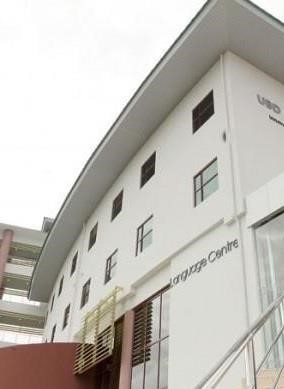
WHAT IS IT?
The Japanese-Language Proficiency Test (日本語能力試験, Nihongo Nōryoku Shiken), or JLPT, is a standardized criterion-referenced test to evaluate and certify Japanese language proficiency for non-native speakers, covering language knowledge, reading ability, and listening ability. The test is held on the first Sunday of December. The JLPT consists of five levels, N5 being the lowest and N1 being the highest level of certification. JLPT is the official worldwide Japanese-Language Proficiency Test and largest-scale Japanese-Language Test.
WHAT ARE THE ADVANTAGES OF JLPT?
JLPT certificates offer various advantages, ranging from recognition as academic credit and graduation certification at schools to preferential treatment at companies and acknowledgement of qualification in society.
WHICH LEVEL (N5 to N1) SHOULD I TAKE?
We recommend students who studied;
– LJ-2404 to take N5,
– LJ-3402 / LJ-3403 to take N4,
– LJ-3404 to take N3
| A summary of linguistic competence required for each level | |
| Level N1 | The ability to understand Japanese used in a variety of circumstances. Reading ・One is able to read writings with logical complexity and/or abstract writings on a variety of topics, such as newspaper editorials and critiques, and comprehend both their structures and contents. ・One is also able to read written materials with profound contents on various topics and follow their narratives as well as understand the intent of the writers comprehensively. Listening ・One is able to comprehend orally presented materials such as coherent conversations, news reports, and lectures, spoken at natural speed in a broad variety of settings, and is able to follow their ideas and comprehend their contents comprehensively. ・One is also able to understand the details of the presented materials such as the relationships among the people involved, the logical structures, and the essential points. |
| Level N2 | The ability to understand Japanese used in everyday situations, and in a variety of circumstances to a certain degree. Reading ・One is able to read materials written clearly on a variety of topics, such as articles and commentaries in newspapers and magazines as well as simple critiques, and comprehend their contents. ・One is also able to read written materials on general topics and follow their narratives as well as understand the intent of the writers. Listening ・One is able to comprehend orally presented materials such as coherent conversations and news reports, spoken at nearly natural speed in everyday situations as well as in a variety of settings, and is able to follow their ideas and comprehend their contents. ・One is also able to understand the relationships among the people involved and the essential points of the presented materials. |
| Level N3 | The ability to understand Japanese used in everyday situations to a certain degree. Reading ・One is able to read and understand written materials with specific contents concerning everyday topics. ・One is also able to grasp summary information such as newspaper headlines. ・In addition, one is also able to read slightly difficult writings encountered in everyday situations and understand the main points of the content if some alternative phrases are available to aid one’s understanding. Listening ・One is able to listen and comprehend coherent conversations in everyday situations, spoken at near-natural speed, and is generally able to follow their contents as well as grasp the relationships among the people involved. |
| Level N4 | The ability to understand basic Japanese. Reading ・One is able to read and understand passages on familiar daily topics written in basic vocabulary and kanji. Listening ・One is able to listen and comprehend conversations encountered in daily life and generally follow their contents, provided that they are spoken slowly. |
| Level N5 | The ability to understand some basic Japanese. Reading ・One is able to read and understand typical expressions and sentences written in hiragana, katakana, and basic kanji. Reading ・One is able to listen and comprehend conversations about topics regularly encountered in daily life and classroom situations, and is able to pick up necessary information from short conversations spoken slowly. |
WHEN AND WHERE IS THE TEST BE HELD?
Every first Sunday of December at Language Centre, UBD
HOW MUCH?
30 BND + Application form 5 BND
HOW DO I APPLY?
You can only register JLPT at Embassy of Japan in August to September every year. Please bring 2 passport-size photos with you.
WHERE CAN I GET MORE INFORMATION ABOUT JLPT?
Please visit JLPT website at https://jlpt.jp/e/index.html
